Waiter, There’s a Fly in My Soup: All About Edible Pests
Waiter, There’s a Fly in My Soup: All About Edible Pests
For those of us who live in the Western part of the world, the idea of intentionally eating insects may seem wild and scary. But for millions of people in different countries, insects are commonly cooked or fried and eaten daily as a delicious snack. It is also a tie to ancestral roots, as many cultures have beginnings where the people ate insects daily in order to survive and gain the nutrients they needed. Entomophagy, or the custom of eating insects, is a common practice among many cultures and is fascinating to learn about due to the number of insects and methods of preparation that are done around the world.
It should be noted, however, that not every insect is edible and it would not be a good idea to eat any bug that is available. Proper cooking methods and research should be completed first to be sure that everything is as safe as possible, while still retaining the nutrients of the insect.
Ants
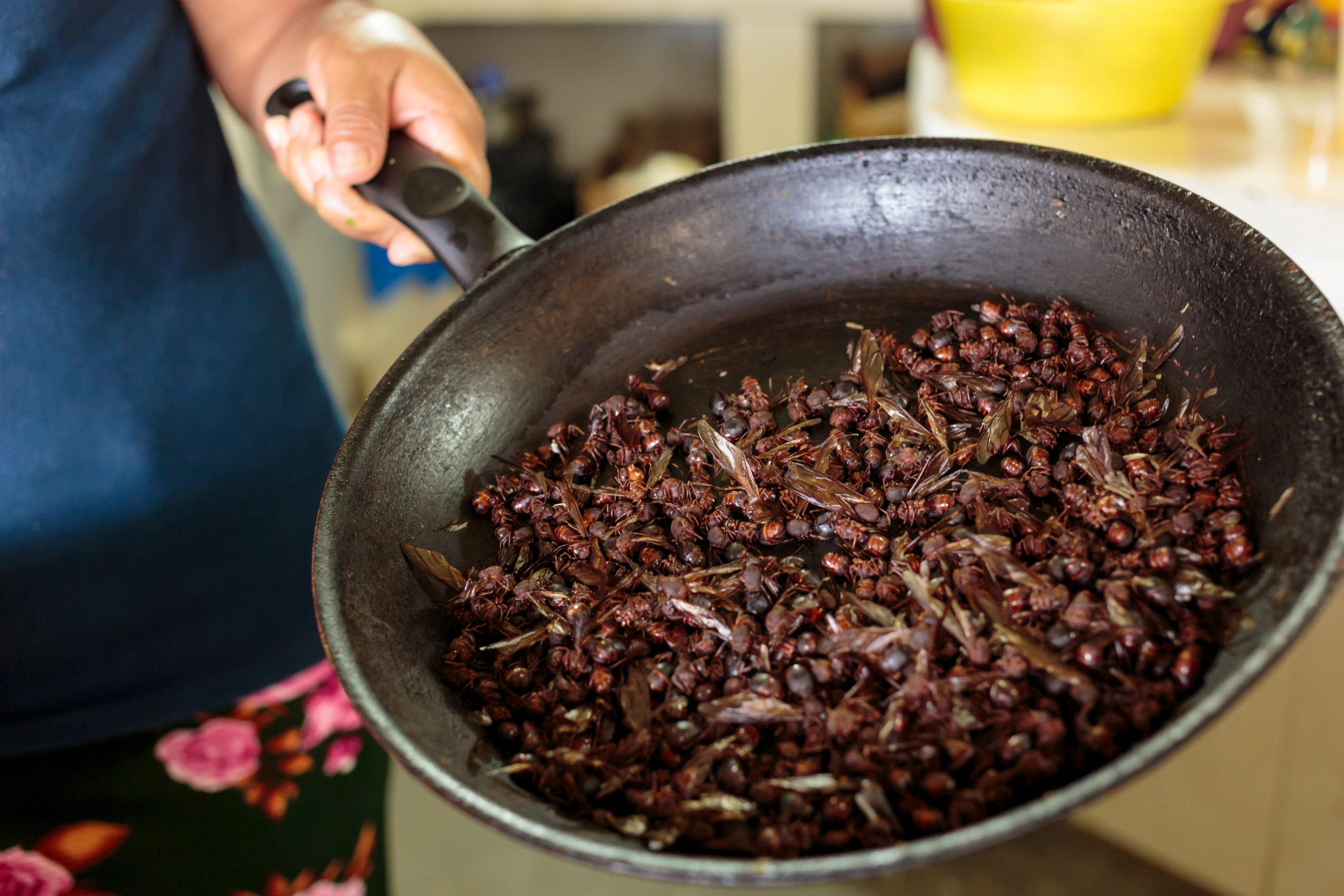
People who have eaten ants report that each species has its own distinct flavor, and since most species are edible, there are many options for consuming ants. The most common and accessible species of ants for cooking include weaver ants, black ants, honey ants, and leaf-cutting ants. Ants are a delicacy in many parts of the world, and one of the countries that utilizes them the most is Brazil. The ants have a range of natural flavors, from vinegary to bitter to sweet. This creates a lot of options for how to prepare these insects and the meal during which to eat them.
Health Benefits: There are a surprising amount of nutrients and advantages to eating ants, despite their small size. They have plenty of calcium, iron, protein, fiber, minerals, and calcium, and can even assist with lowering blood pressure and maintaining cholesterol.
Cooking Methods: Ants are prepared in many ways, and it all depends on the occasion and the culture in which they’re eaten. Many places, like Peru and Colombia, fry the ants and sell them as a crispy snack, like popcorn or chips. Other countries include ants in a soup as a source of protein, like in China and Laos. Brazil uses ants in these ways and more, including as a dessert! Certain species seem to take on a minty taste, so covering them in chocolate provides a small treat after meals. The larvae of ants is even used, as some have a more robust flavor and seem to be great in sauces and used with spices.
Crickets
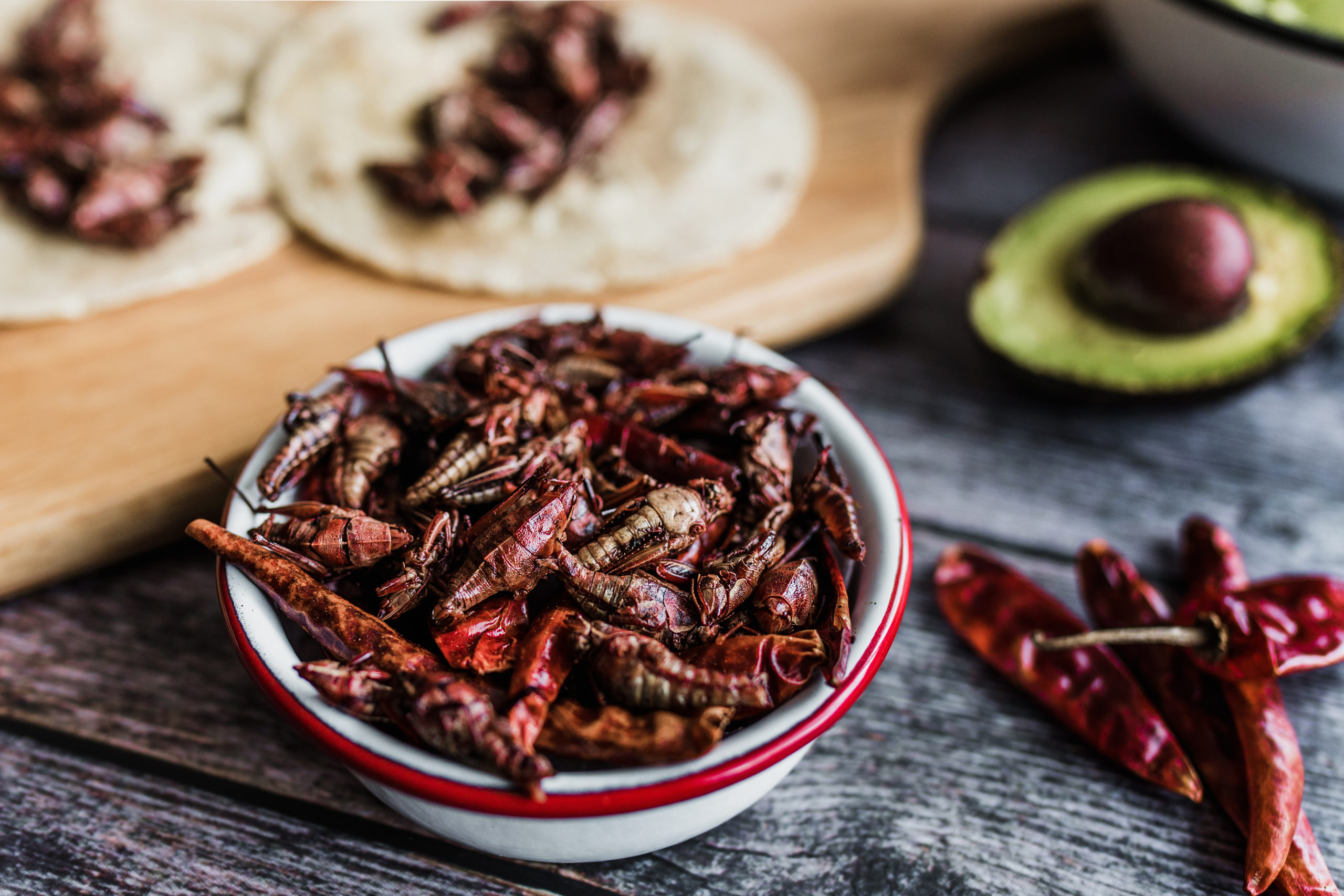
Crickets are another very common snack in many countries, and are even sold in small packages in the Western parts of the world. Crickets seem to be less expendable than ants in terms of how much cooks can do with a batch of crickets, but they are still a favorite of many cultures. They are most popular in Thailand, where they are sold by street vendors in all areas. Interestingly, the natural flavor of crickets varies with the region. This is because they take on much of their diet’s taste, such as grains or plants. Crickets have been a reliable food source for centuries, and their flavors and benefits provide good reasons why.
Health Benefits: Crickets also have many health-conscious reasons for eating them as a snack. They have high nutritional value due to their high protein, calcium, potassium, and zinc content. They are also lower in fat than a traditional meat-based protein source. Crickets can also help with digestion and inflammation if enough are eaten. It may be worth looking into adding crickets to your diet just for the health benefits alone.
Cooking Methods: The most common way to prepare a cricket is by frying or roasting after the insect is dried out. Some of the packaged flavors have seasonings reminiscent of American potato chips, like sour cream and onion. The seasonings that are used in the dish depend on the country and culture. Some cooks use a simple combination of salt and oil in order to let the natural nutty flavors of the cricket sing. Vendors in Thailand use a special combination of spices, including Thai pepper powder and a version of homemade soy sauce called Golden Mountain sauce, in a wok to flash-fry the insects, creating a snack called jing leed. Crickets can also be baked or eaten raw, but frying them in spices is a much tastier way to enjoy these pests as an interesting snack.
Locusts/Grasshoppers
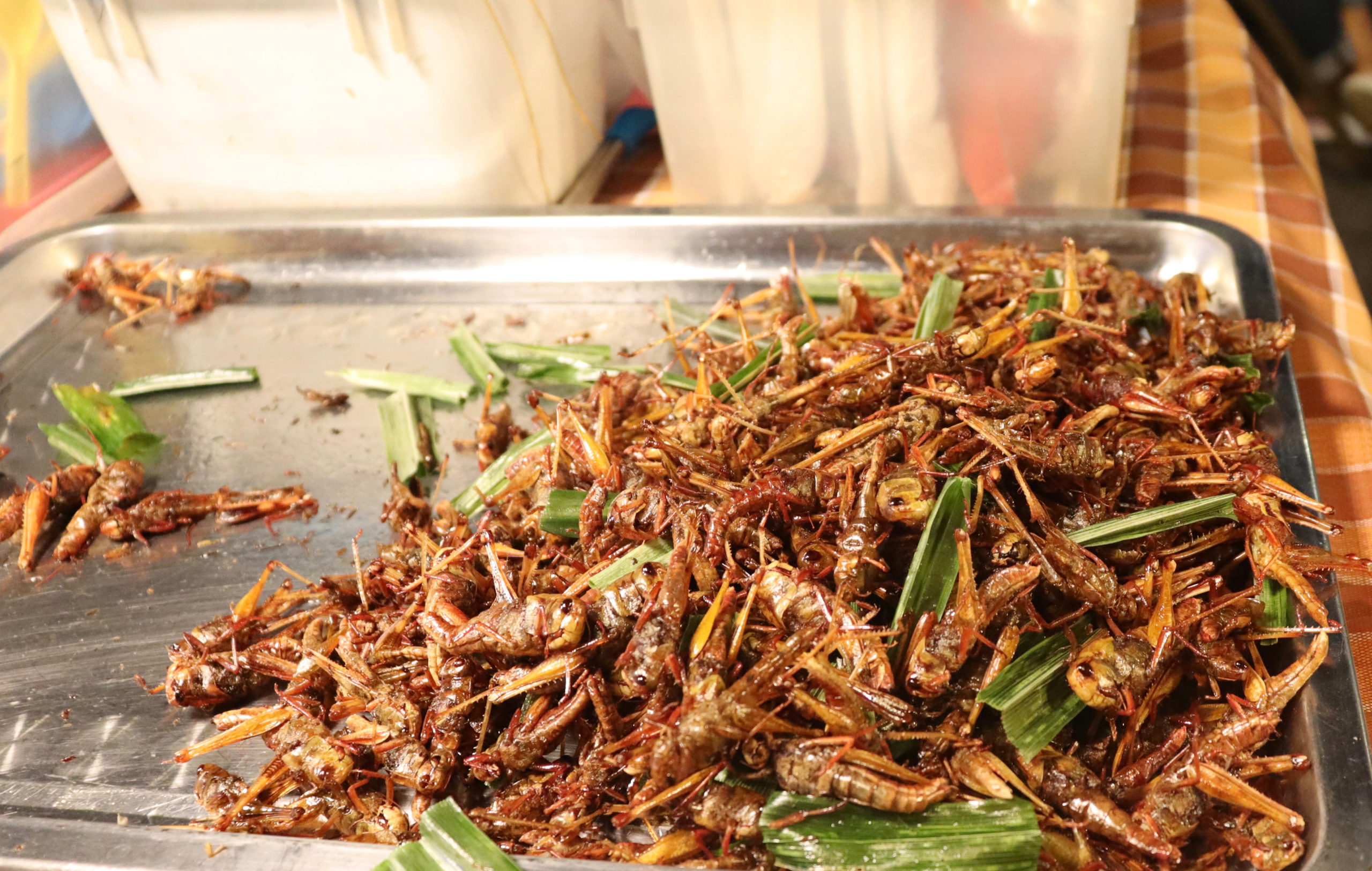
Since locusts (or grasshoppers) are commonly seen in a swarm that plagues farmers everywhere, it is no wonder why they are a common snack in many countries. They are also notoriously easy to capture, making for an easy prep stage of cooking. Mexico and Israel are likely the countries that enjoy locusts the most often. The wings and legs are usually removed before any cooking takes place, since they are apparently too tough to chew through and don’t provide much flavor or nutrients anyway. The taste of locusts also seems to vary depending on the country, as some liken them to fried prawns, while other people claim it rivals the smoky flavor of bacon.
Health Benefits: Since grasshoppers can be good-sized insects, they provide a lot of protein and calcium for a snack. They also have plenty of iron, sodium, and potassium, making for a nutrient-rich dish.
Cooking Methods: The most popular way to enjoy locusts is also by frying them, but they can be enjoyed in other ways a well. While many locations remove the wings and legs, groups in Africa include the legs in their dishes by mixing them with salt and peanut butter. The crunch of a locust is best translated in pan-frying or deep-frying, especially when they are combined with robust flavors like garlic and salt. In Mexico, they commonly enjoy chapulines, or fried native grasshoppers that are cooked with delicious flavors like lime and chipotle peppers. They are often used as a topping on tacos in addition to being a tasty snack, and they have even expanded to American entertainment spheres, such as baseball stadiums.
Termites
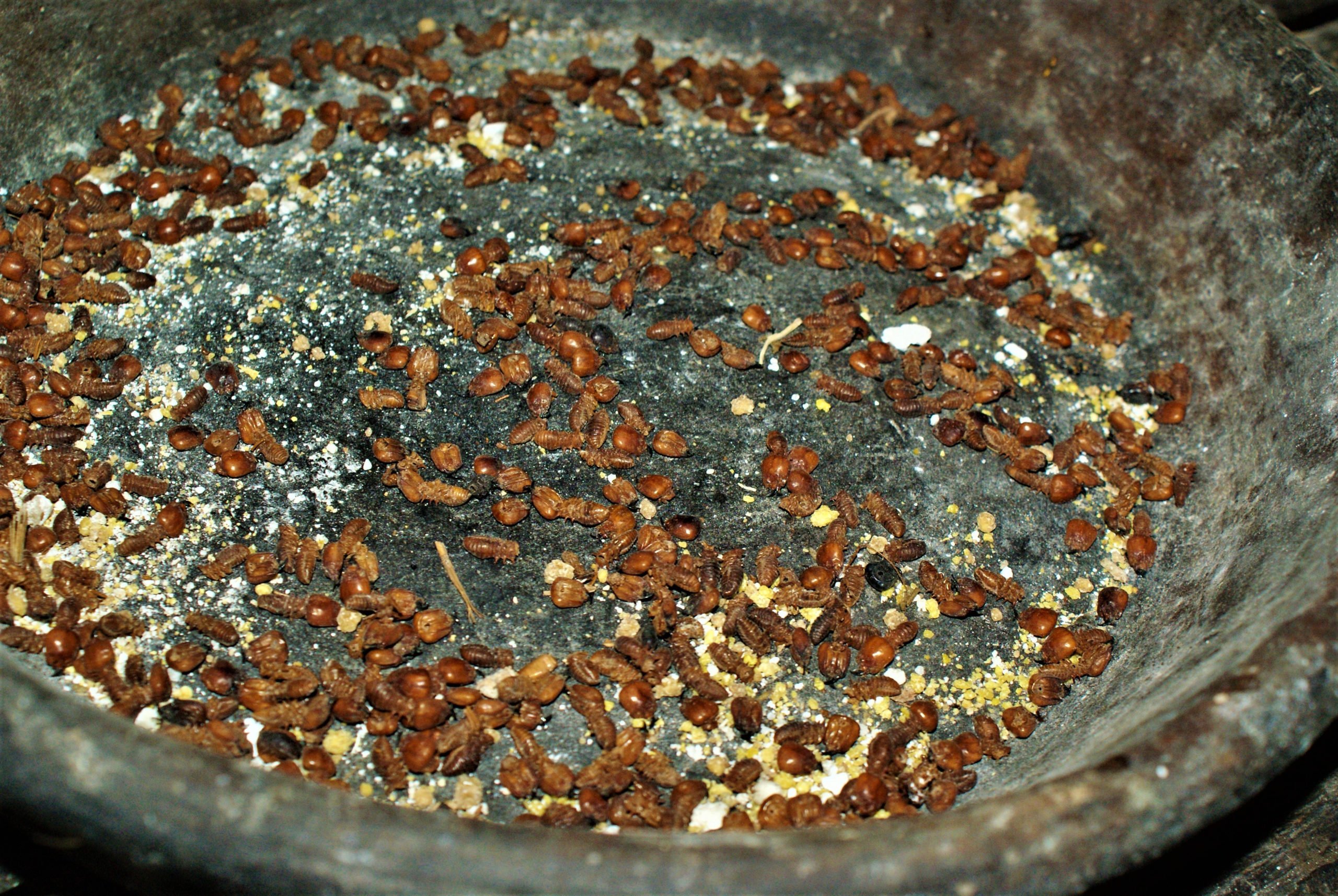
Termites are infamous pests due to the potential thousands of dollars worth of damage they can cause to a home, but some countries avoid this problem by harvesting them from wood and cooking them. They are quite profitable, as homeowners can harvest them from their houses and sell them, but the demand has risen as the supply goes down. Termites with wings seem to be preferred due to their ease of eating and larger size. But the most desirable termite to eat for those who enjoy them is the queen, since she is the largest of all and therefore provides the most flavor.
Health Benefits: Many insects are high in protein and fat, but termites are arguably the highest, with a protein content that rivals fish and beef. They also have plenty of nutrients, including vitamins A and C. In many African areas, termites are mashed up and fed to babies with the belief that the nutrients will help with their growth over the coming months.
Cooking Methods: Termites can be fried in oil, like any edible insect, and be made into a crunchy snack that is sold in many marketplaces. Kenya is a popular place for eating termites. The people commonly utilize the insects in many cooking uses and methods, including making into an oil, a flour, and a thickening agent in cornmeal porridge, or ugali.
Larvae & Grubs
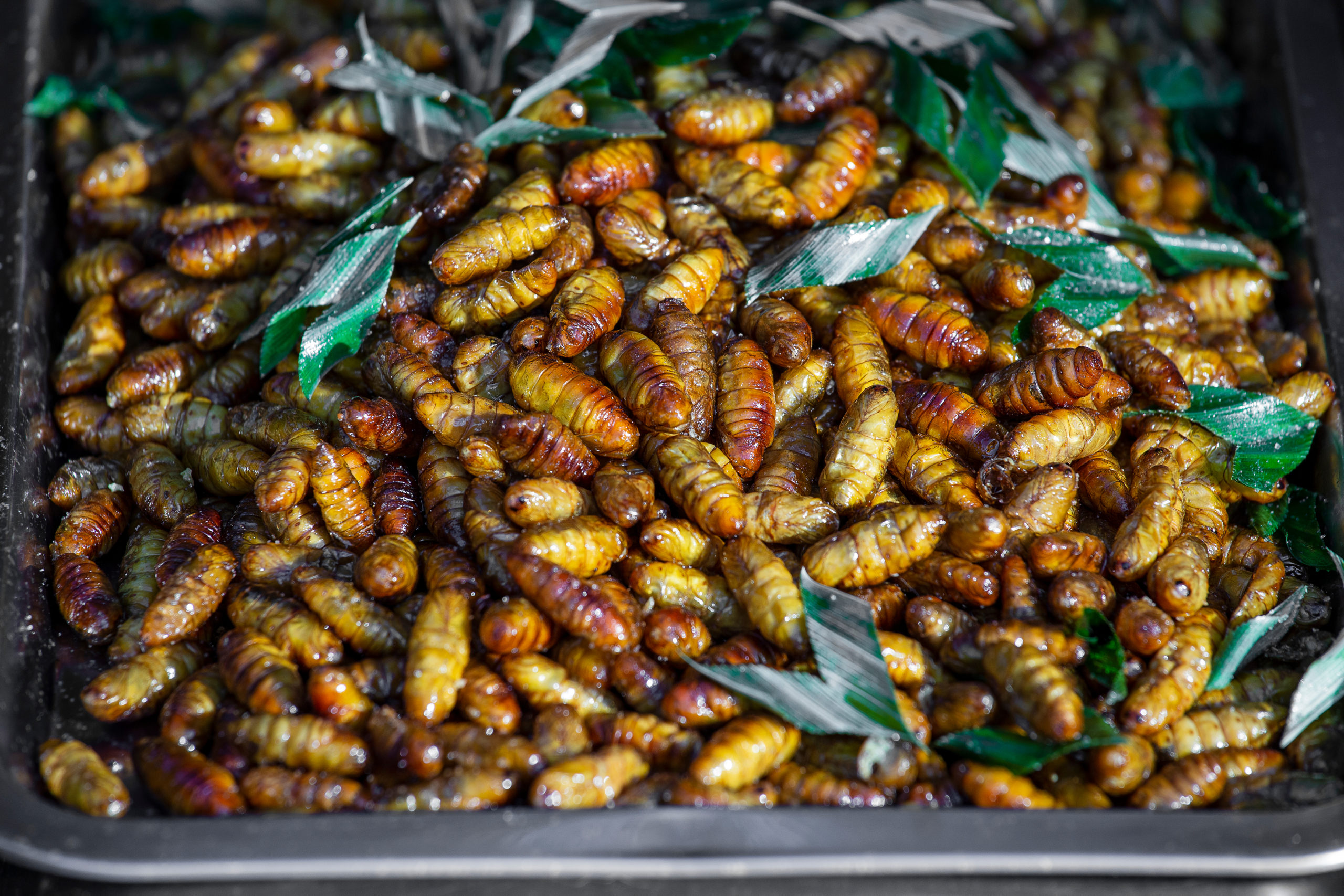
While they are gross to those of us who have an aversion to gelatinous and uncomfortably squishy textures in food, the larvae and grub stages of many insects are enjoyed as delicacies in many parts of the world. They are collected from the plants and environments they commonly enjoy, like the Goliath Beetle on a banana tree, the Giant Skipper caterpillar on the maguey plant, or a Shore Fly along the lakeshore. The earlier stages of insects provide easy eating for the consumer, as it can be made crispy or enjoyed raw when it is still soft.
Health Benefits: Since the larvae are not fully developed into their final form, they have arguably more nutrients than they would if they were consumed later. Larvae has many more fatty acids and amino acids that provides health benefits for the person eating them. The vitamins found in most edible insects, like the variations of vitamin B, are especially prevalent in caterpillars. The protein and fat content is also far higher in the larvae and pupae stage than in the adult stage. For people looking for nutrients in their insect-consumption, the younger stages are a great place to start.
Cooking Methods: Caterpillars and larvae are viewed as delicacies in Mexico and Africa, so they are pursued as nutritious treats. Caterpillars and larvae are enjoyed fried like many other insects, and it turns their soft texture into an enjoyable, crispy experience. They are sold in their fried and seasoned form, as well as in cans at the markets.
Beetles
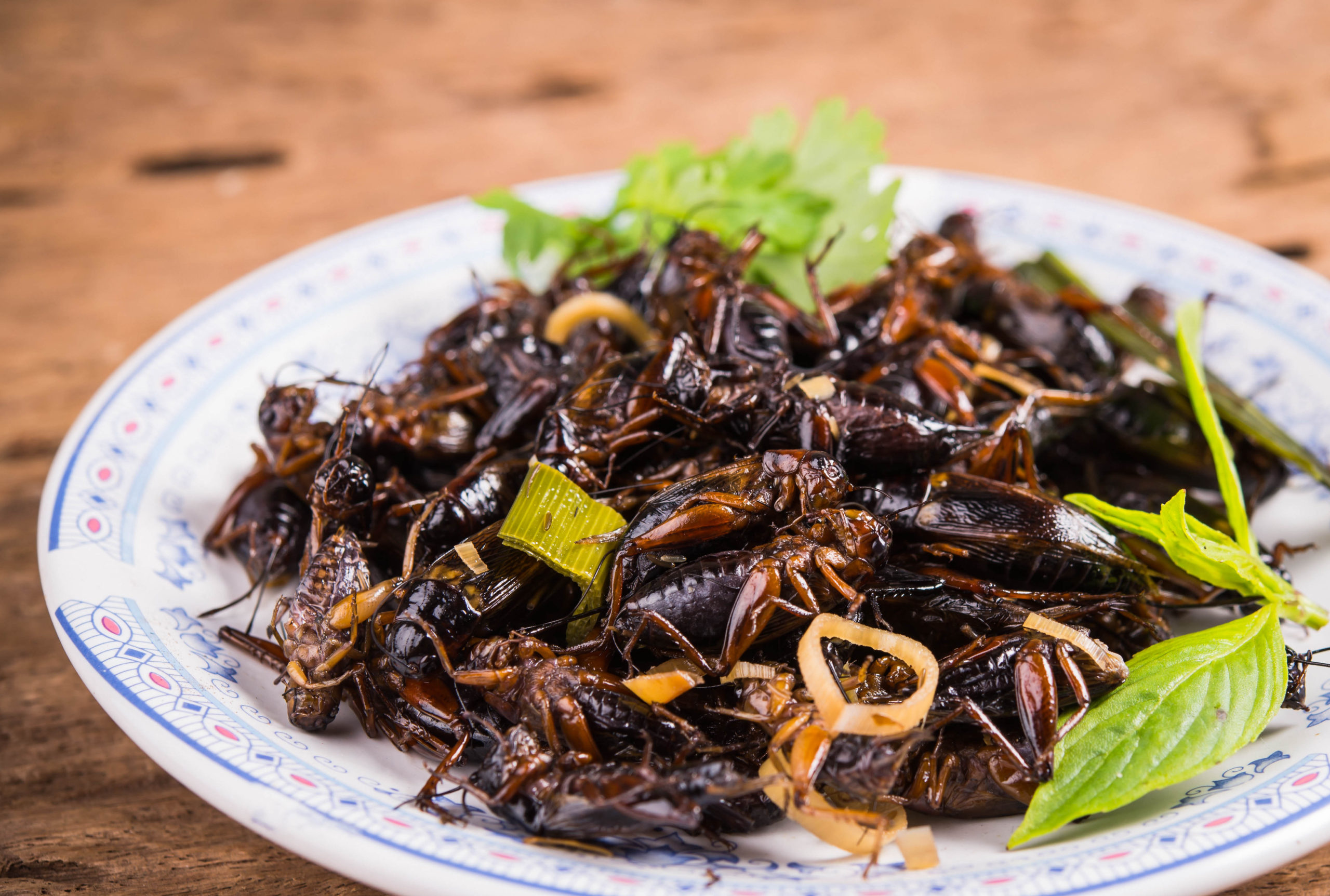
Quite a few types of beetles are beneficial and delicious insects in entomophagy, and many of them are in abundance for those looking. The most popular places for consuming beetles include Africa and the Amazon basin. Beetles are actually one of the most commonly enjoyed insects, which may be in part due to the many species that are edible. These include June, dung, long-horned, and rhinoceros beetles.
Health Benefits: Beetles provide a multitude of health benefits when they are eaten. They have high protein and fat contents, like termites, but beetles have the added benefit of converting cellulose into fat for humans. They also have every essential amino acid and ash, inorganic material that contains potassium, phosphorus, and calcium. There are too many health benefits in eating beetles for many cultures to turn down eating them, which is why they are so popular.
Cooking Methods: Beetles are often roasted and fried like any edible insect. They can also be baked in an oven and added into other dishes, like soup, so that the nutrients are dispersed throughout a more traditional meal.
Cicadas
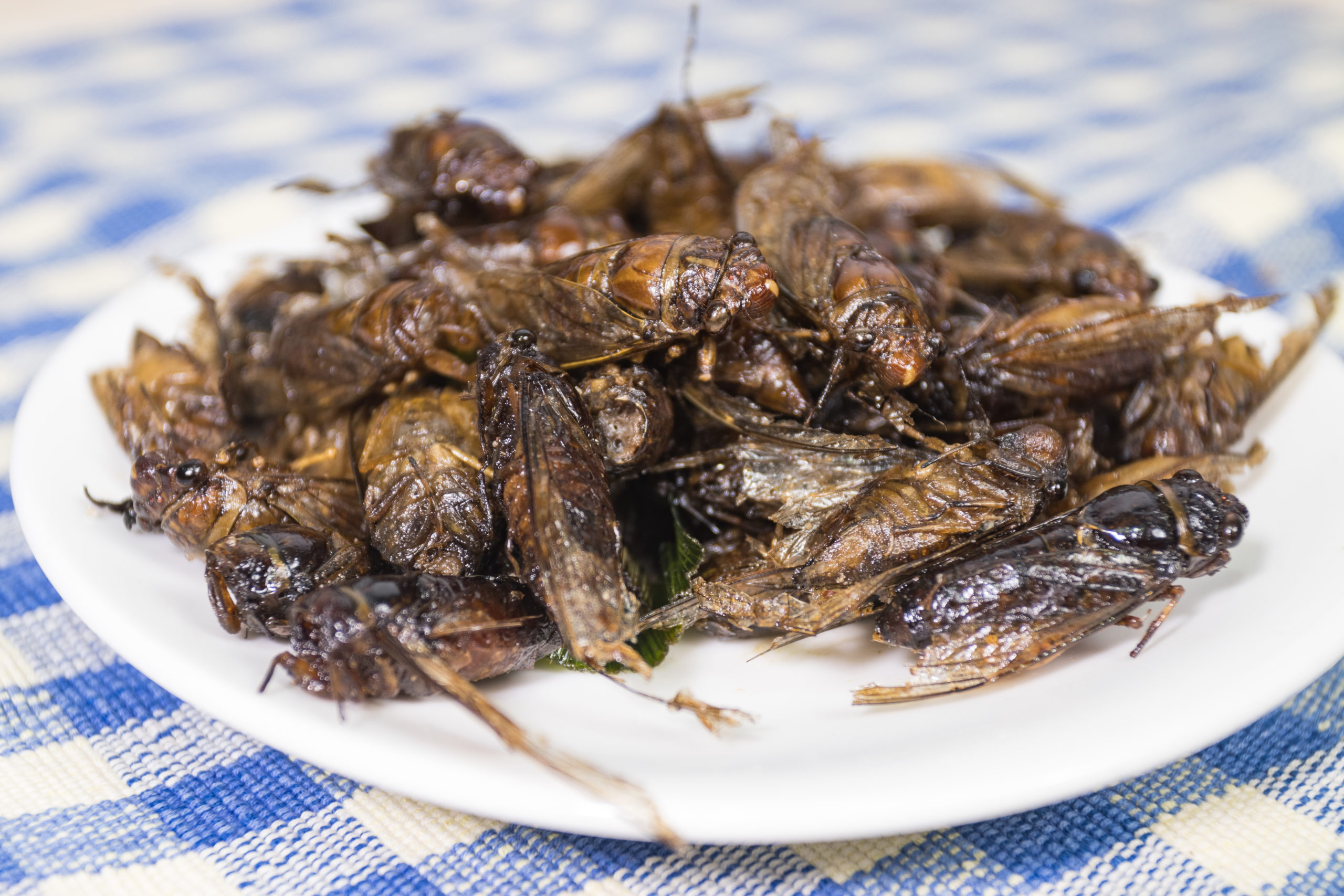
Cicadas, those pesky bugs that emerge every seventeen years to sing their obnoxious song, are also edible and enjoyed by many people. The only problem is that they are not always available, so they are not the most reliable food source. They also cannot be eaten when their exoskeleton is still present since it’s so tough, so they have to be caught and cooked right after they molt. It is worth wondering whether the waiting and precision is worth it, but only those who have eaten cicadas can truly answer that question.
Health Benefits: The exact health benefits of cicadas are not known, but it seems that they hold the typical composition of an average edible insect: low-calorie, high-protein, and high-fat. Other insects, like beetles and termites, have higher nutritional value that we know of, so it’s good those are more available than these insects.
Cooking Methods: Cicadas are enjoyed in many ways when they are readily available. They can be deep-fried, like usual, and eaten as a crunchy snack. They can also be a good source of protein in tacos, salads, and barbecue dishes. Some people say that their natural flavor is buttery and nutty, while others liken it to asparagus.
Stinkbugs
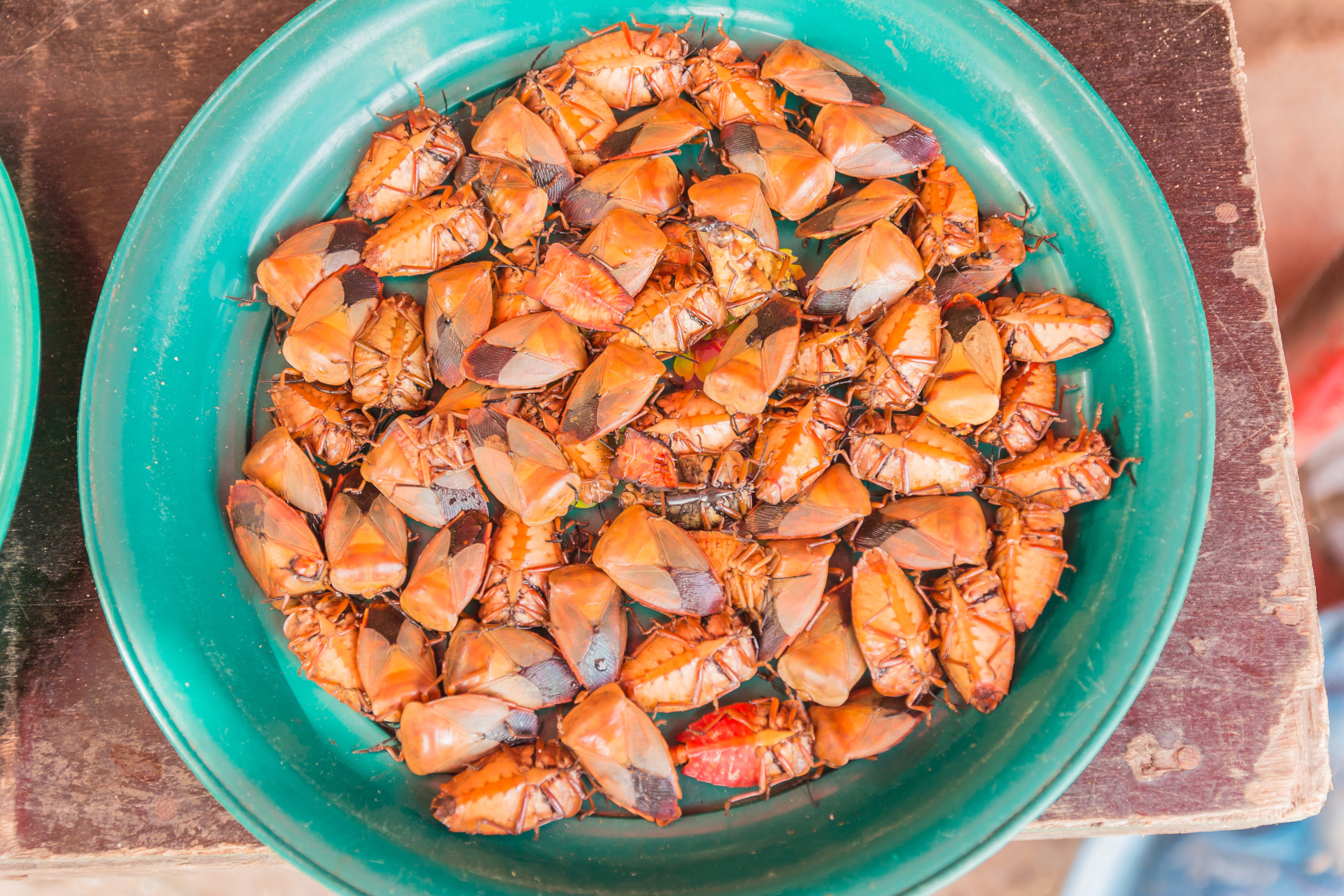
Stinkbugs seem like the exact opposite of something we want to eat based on the name alone, but they are actually commonly enjoyed in Mexico. The smell is still present after cooking, so it is a food that is either repulsive or tangy and enjoyable to diners. The festival for stinkbugs, the Jumil Festival, honors the supposed medically-beneficial insects. It is one of the most beloved and sought-after delicacies in Mexican insect dining.
Health Benefits: The stinkbug has many benefits to consuming it, despite its strong odor. It is high in protein and minerals, and is also thought to have multiple aphrodisiacal and medicinal effects for humans. These benefits exist whether they are eaten cooked or live!
Cooking Methods: Yes, stinkbugs are often eaten live. The idea of live insects crawling around while being eaten is a nightmare for many, but is part of the appeal for others. They are typically eaten alone for this reason, since it is easier to grab live stinkbugs by hand than in a dish. But when they are cooked or toasted, they are supposedly great ingredients in a taco or side dips. They also have a spicy taste in addition to their strong smell, and many diners say they taste like cinnamon and anise.
Pest Control
Insects can make for surprisingly nutritious and delicious meals when prepared correctly. But choosing to eat an insect is much different than that insect invading your home. Contact pest control today for a free quote and to find out how to protect your home against these pesky pests that somehow avoided becoming someone’s meal.
Citations
Conrad, K. (2020, June 18). Insects that are regularly eaten around the world. World Atlas. Available at https://www.worldatlas.com/articles/insects-that-are-regularly-eaten-around-the-world.html (Accessed on March 4, 2022).
Department of Systematic Biology, Entomology Section. (n.d.). Insects as food for humans. Smithsonian. Available at https://www.si.edu/spotlight/buginfo/insects-food (Accessed on March 4, 2022).
Hale, B. (2018, November 14). 10 worldwide insect delicacies. Listverse. Available at https://listverse.com/2018/11/14/10-worldwide-insect-delicacies/ (Accessed on March 4, 2022).
Lang, A. (2021, October 7). All you need to know about eating ants. Healthline. Available at https://www.healthline.com/nutrition/eating-ants (Accessed on March 4, 2022).
McCarthy, I. (2021, January 5). What’s bugging you? 10 of the best insect delicacies around the world. Fine Dining Lovers. Available at https://www.finedininglovers.com/article/insect-delicacies-around-world (Accessed on March 4, 2022).
Miroff, N. (2013, July 13). In Mexico, insects infect menus in turn to ancestral dishes. The Washington Post. Available at https://www.washingtonpost.com/world/the_americas/mexicos-squishy-crunchy-ancestral-eats/2013/07/12/92f978de-ea6b-11e2-818e-aa29e855f3ab_story.html (Accessed on March 4, 2022).
Tabin, S. (2021, May 24). Here’s some advice on eating cicadas from a top nutritionist. Forbes. Available at https://www.forbes.com/sites/saratabin/2021/05/24/heres-some-advice-on-eating-cicadas-from-a-top-nutritionist/?sh=15538ef81756 (Accessed on March 4, 2022).
Tang, C., Yang, D., Liao, H., et. al. (2019). Edible insects as a food source: review. BMC. Available at https://fppn.biomedcentral.com/articles/10.1186/s43014-019-0008-1 (Accessed on March 4, 2022).
Request a Free Quote Today
(We do not share your data with anybody, and only use it for its intended purpose)


